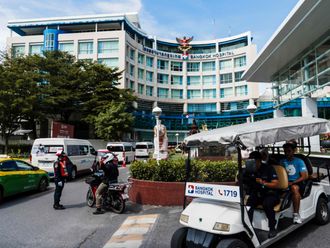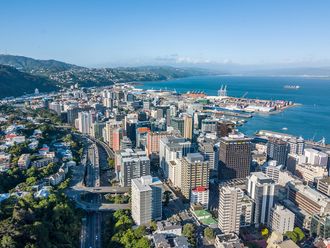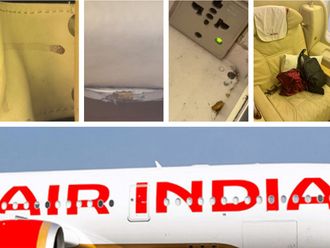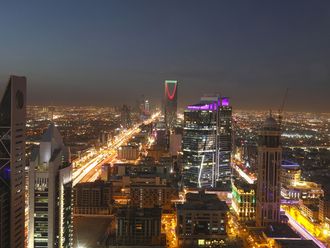Twenty years ago, the militarised barrier between Soviet-dominated Eastern Europe and the democracies of the West met its end when Hungary's reform communist government announced it would open its borders, allowing thousands of East Germans to escape into Austria.
The decision triggered the largest westward exodus of East Germans since the construction of the Berlin Wall in 1961, unleashing a chain of events that brought down the Wall and the communist regimes of Eastern Europe.
"It was a snowball or a domino effect," says historian Geza Jeszenszky, a member of the anti-communist opposition in 1989 and Hungary's first post-communist foreign minister.
"When so many East Germans escaped to the West, it undermined East Germany, which brought down the wall, which induced the Czechs to make the so-called Velvet Revolution and the Romanians to overthrow [dictator Nicolae] Ceausescu."
Some 10,000 East Germans crossed the border in the first 24 hours after the announcement and proceeded to West Germany, where they were entitled to instant citizenship. Hungarian border guards waved them through.
There has long been speculation as to what was going on behind closed doors in Budapest, Moscow and Berlin, and whether key decisionmakers were aware of the potential consequences.
Recent research suggests that while former Soviet president Mikhail Gorbachev tacitly approved the arrangement, neither he nor his colleagues in Hungary and East Germany realised the full implications.
"They did not foresee the chain of events," says Andreas Oplatka, a Hungarian-born Swiss journalist.
"The Hungarians were querying the Soviets through different diplomatic contacts; the Soviet sources all the time said: It's up to you."
Hungary's prime minister at the time, Miklos Nemeth, was a reform communist who took Gorbachev's perestroika, or reform, policies to heart. In May 1989, after consulting Moscow, Nemeth's government had announced it would begin dismantling its western border defences.
Word spread quickly in East Germany where thousands were planning their summer holidays to Hungary. By mid-August, some 60,000 East German "tourists" were camped out in Hungary, refusing to go home and actively seeking escape routes into Austria. Nemeth's government was backed into a corner, according to Oplatka. Concerned about the plight of ethnic Hungarians in Ceausescu's Romania, they had signed the Geneva Convention on Refugees earlier that year, which prohibits the forced return of political refugees.
"It was unthinkable that Hungary would, on one hand, make human rights claims on behalf if its minority and not respect the rights of East German refugees," he says. "They finally had no other solution but to open the border." Nemeth has recently said he was still wary of Moscow's reaction, given that 80,000 Soviet troops were then stationed in Hungary. His solution: to run a "test" to gauge the mood of his nominal East Bloc allies.
A border ‘picnic'
In August 1989, his government granted local democracy activists permission to organise a symbolic event on the border near Sopron — a "pan-European picnic", in which they would share food, refreshment and declarations of cooperation with their Austrian neighbours. A rural border gate would be opened for just three hours to allow approved delegates to pass through.
Behind the scenes, authorities made sure several hundred East Germans were made aware of the August 19 event, and Nemeth has said he issued orders that border guards should let them pass.
But the orders never reached the officer on the ground, Lieutenant Colonel Arpad Bella, who was suddenly confronted with a crowd of 150 East Germans rushing his position at the rural gate.
"I don't know why I didn't get this order, which was stopped somewhere within the leadership of the border guards," Bella says. "I didn't have much time to decide what to do." Fortunately, he decided to order his men to step aside, ultimately allowing 600 East Germans to escape into Austria.
The organisers of the picnic had also been left out of the loop. "They threw us in the deep water and waited to see if the sharks would come," says organiser Laszlo Nagy, a chemical engineer. "When they didn't come, they all jumped in as well."
What happened over the following three weeks is still a matter of dispute. When Moscow and East Berlin failed to react to the "picnic" escape, Nemeth said his government decided they would soon open the border altogether, allowing the remaining 60,000 East Germans to leave. But events in the border zone in late August suggest there may have been a power struggle between hardliners and reformers.
Laszlo Magas, a university professor and "picnic" organiser, said, "There were competing leaderships in Hungary during that time. The fight finally finished with the victory of the reformers."
Oplatka, who interviewed Gorbachev and Nemeth, disagrees, arguing that hardliners had already been sidelined by late August. But he says Hungarian and Soviet leaders still didn't realise the scale of the changes they were about to unleash. "Days before the decision to let all the East Germans go, Nemeth wasn't sure if the historical consequences would be visible in two, three or five years' time," he says.
In reality, the effect was prompt, profound and long-lasting. The mass escape after September 10 encouraged more East Germans — most of them young, skilled, and educated — to flee their country in the coming weeks and months. On November 9, 1989, increasingly desperate East German authorities opened the Berlin Wall for the same reason they had built it: to discourage a mass exodus.













